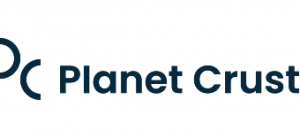Crust Technology strives for feature-by-feature equivalence with Salesforce. While some parts of our feature set are different (and, we believe, superiour!), the ability to migrate from even complex Salesforce implementations, and immediately realise performance, control and cost benefits, makes the Crust and Corteza platforms the more attractive choice.

Modern Code and Modern Architecture
The backend of Crust and Corteza is written in Golang, a multi-threaded processing language. Designed with performance in mind from the outset, it’s extensively used by Google to power its data centres and applications. Salesforce themselves are even recent converts to Golang.
The frontend of Crust is delivered in Vue.js, a lightweight JavaScript engine which also focuses on performance, reusable components and optimized re-rendering. The frontend should always create an outstanding experience for the users.
The majority of open-source CRM’s are written in PHP, an older, single-threaded processing, web programming language. Reaching up to the hundreds of thousands of users demanded by modern-day customer scale applications should not necessitate complex optimisation efforts on an older codebase – performance should be there by design, as it is in Crust and Corteza.
While Crust’s architecture allows it to be shipped as a “monolith” bundle for smaller sites, it can be split into microservices for larger sites, allowing components with heavier workloads to be fed and watered individually according to their processing needs.
 Crust Low-Code Platform
Crust Low-Code Platform
The Crust Low-Code Platform is Crust’s answer to Salesforce Lightning, the cloud vendor’s low-code platform. It allows businesses to customise Crust CRM quickly and safely, augment its functionality or create entirely new applications (e.g. Crust Service Solution is also built with our Low-Code platform).
Intuitive, yet comprehensive in its approach, Compose delivers a “building block” method for designing and implementing your key business applications. With Corredor you can add automation scripts, increasing the efficiency of your application.
With powerful API’s Compose also enables businesses to extend safely beyond the borders of their Crust implementation and integrate with third-party systems – either within the boundaries of their firewall or outside.
User Experience (UX)
UX is crucial, but it is not always about creating unique UX. While some of our features necessitate innovation, much of our approach at Crust is driven by what businesses expect to see from their enterprise applications, especially if they’re seeking viable alternatives to solutions proposed by the likes of Salesforce and Microsoft Dynamics365.
Control
With Salesforce you are stuck to their cloud. You don’t know exactly where your sensitive business data is stored, or who has access see it. In Crust and Corteza however, you have full control over all your data. You decide where you want to store it: in the cloud of your choice, behind a firewall or as a hybrid of the two.
Cost
Not everything revolves around cost, but Salesforce prices do hurt. The full Salesforce suite can cost up to an eye-watering USD 300 per user per month and even that does not include the costs of other applications in the appexchange.
Crust and Corteza products are and always will be 100% open source and the cost of support is a fraction of that of Salesforce. Our commitment to quality is sky high and we will always chase feature equivalency with or superiority to Salesforce.
We’re Growing

Crust Technology has ambitious growth plans. We’re already the premium open-source CRM vendor for enterprise-scale deployments, but we’re aiming for outright market leadership. We’re excited about this journey. If you are too, please contact us at recruitment@crust.tech.















 In June 2019,
In June 2019, 


